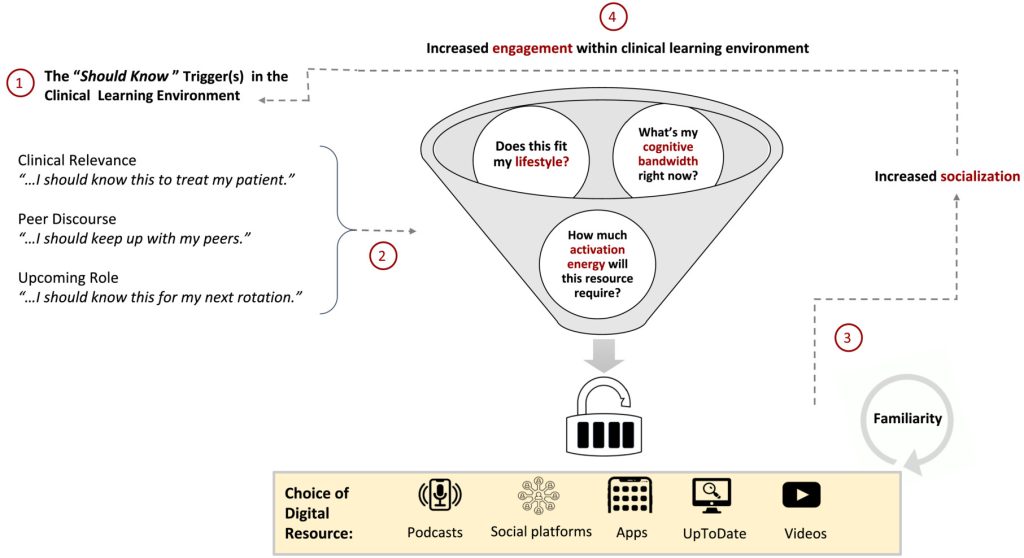#60 LIVE at ASME 2024 – Instagram-ing the Study Sesh…
Episode host: Jonathan Sherbino.

Join us on The PAPERS Podcast as we delve into the digital habits of today’s health professionals. Discover how residents choose their learning resources and the psychological factors driving these choices, providing insights that can help both learners and educators optimize their educational strategies.
Episode Article
Trivedi SP, Rodman A, Eliasz KL, Soffler MI, Sullivan AM. Finding the right combination for self-directed learning: A focus group study of residents’ choice and use of digital resources to support their learning. The clinical Teacher. 2024 Jan 17:e13722.
Episode notes
Background
Back in my day… yeesh… am I really becoming the old man yelling at kids to keep off his lawn…. back in my day “I read it somewhere” was an acceptable reference to authority. (It is a presumption that textbooks and peer-reviewed journals are accurate/sufficient sources of evidence, but it is not the topic of our discussion today.) Kids today… by which I mean highly intelligent, motivated, thoughtful, and critical health professionals are more likely to say, “I heard it on a podcast,” as an equivalent gesture to authority. Appreciating the irony of discussing this topic on The PAPERs Podcast, our topic today is how learners choose a digital resource to support their learning.
Purpose
From the authors: “The aim of this study was to discover what factors drive residents’ choice and use of digital resources outside of patient care hours. We also sought to assess whether and to what extent the psychological needs defined by SDT (self-determination theory) help explain the mechanisms that influence learners’ choice for particular types of resources…”
Methods
The authors used a framework approach to analyze virtual focus groups. Recognizing the iterative nature of the process, framework analysis begins inductively via immersion in the raw data to identify initial codes and patterns. In addition, the authors used self-determination theory to deductively inform the framework used for coding. Self-determination theory posits that the need for autonomy (being in control), competence (feeling effective and accomplished), and relatedness (social belonging) drive voluntary behaviour.
The analytic team was intentionally diversified with CEs with/without digital resource experience and PhD methodologies without digital resource experience.
Each team member (5) independently read and assigned preliminary codes.
A member check was conducted.
The study was reviewed by two Institutional Review Boards (IRBs) and exempted from full review
Results/Findings
Eight 1-hour focus groups of 23 internal medicine residents at two large residency training programs were conducted.
Digital resources identified included:
| Apps | Podcasts |
| Blogs | Question banks |
| Digital textbooks | |
| Google image search | Videos |
| Google search | Websites |
| Journal resources | YouTube videos |
This LOVELY figure from the article shows the cycle of use of digital resources as influenced by learner choice.

Conclusions
From the authors:
“The selection of digital resources for self-directed learning is driven by multiple factors, suggesting an interdependent relationship between the learning environment and a residents’ cognitive capacity. Understanding these interconnections can help residents and clinical educators explicitly choose resources that fit their lifestyle and learning needs.”
Trivedi et al.

0 comments